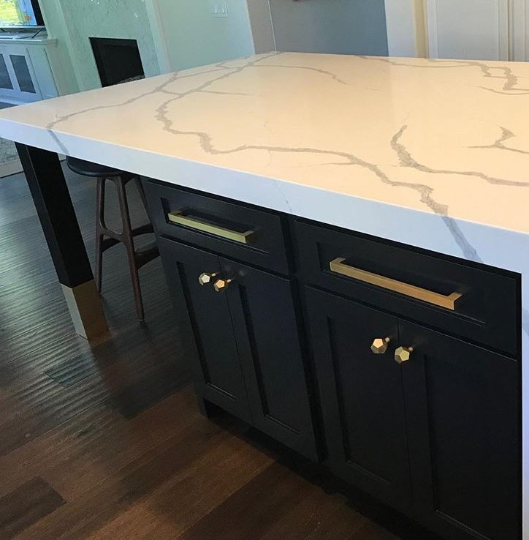Tailor Your Kitchen Look with Unique Legs For Kitchen Island Choices
Tailor Your Kitchen Look with Unique Legs For Kitchen Island Choices
Blog Article
An Overview to Picking the Perfect Legs For Cooking Area Island for Your Home
Selecting the excellent legs for your kitchen island is a nuanced decision that affects both the capability and aesthetic appeal of this central area. As you think about these elements, it ends up being obvious that the right legs can change not only the appearance of your kitchen area yet additionally its use for years to come.

Recognizing Kitchen Island Legs
When choosing legs for a cooking area island, it's important to understand their practical and aesthetic functions in the total design. The legs serve as a critical support group, making sure stability and durability for the island, which typically operates as a work area, dining location, or collecting spot. Consequently, the selection of product and building strategy must be durable adequate to endure daily use and potential wear.
Along with their structural obligations, legs contribute considerably to the island's visual appeal. They can boost the kitchen's style, whether via typical, modern, or diverse layouts. The elevation and percentage of the legs are additionally important considerations; they must harmonize with the island's kitchen counter height while making sure comfy seating for those making use of the space.
Moreover, the leg design can affect the total flow of the cooking area. Open, airy leg styles can create a feeling of lightness, while strong, substantial legs may share a more based and secure aesthetic - Legs For Kitchen Island. Recognizing these aesthetic and useful aspects will direct homeowners in making educated selections that complement their cooking area's style and improve its functionality
Popular Styles and Products
The choice of legs for a kitchen area island incorporates a selection of popular styles and materials, each offering special qualities that can enhance both functionality and aesthetics. Amongst one of the most sought-after designs are modern, rustic, and traditional. Contemporary legs frequently include smooth, minimal designs that stress simpleness and tidy lines, making them optimal for contemporary cooking areas. Rustic styles, on the other hand, embrace all-natural aspects and commonly display reclaimed timber or distressed coatings, including warmth and appeal to the area. Traditional legs normally exhibit luxuriant details and craftsmanship, enhancing classic cooking area layouts.

Elevation and Security Factors To Consider

The legs of the kitchen island need to offer ample assistance, ensuring that the structure can endure daily use without changing or wobbling. Product option plays a considerable role in stability; metal legs, for instance, tend to supply better stamina contrasted to wood.
Matching Your Kitchen Visual
Picking the best legs for your cooking area island exceeds performance; it also plays a significant role in the general visual of the room. When choosing legs, consider the layout style of your cooking area. For a contemporary appearance, smooth steel or minimalist designs can develop a clean, contemporary ambiance. On the other hand, rustic or conventional cooking areas usually gain from wooden legs with complex detailing or a troubled finish, boosting warmth and personality.
Color is an additional vital aspect. Legs that match or comparison with your island's surface and bordering cabinetry can develop aesthetic harmony or striking focal points. Coupling dark timber legs with a light marble kitchen counter can include depth and passion. Additionally, think about the coating of the legs; matte, glossy, or distinctive coatings can substantially impact the general feeling of the kitchen.
Installation and Upkeep Tips
Setting up kitchen island legs calls for mindful attention to detail to ensure both security and aesthetic appeal. Begin by choosing an appropriate area for your island, guaranteeing it is degree and has sufficient room for activity. If you are connecting the legs to a wall surface or making use of braces for included support, make use of a stud finder to find wall surface studs. Mark the positioning of the legs precisely prior to boring.
When protecting the legs, use premium screws and, if required, wood adhesive for extra stamina. For metal legs, make sure that you are using appropriate supports and devices to stop damages to your floor covering. It is recommended to look for levelness after installment, making changes as required to avoid wobbling.
Tidy the legs with an ideal cleaner, avoiding abrasive materials that might damage the surface area. By complying with these installation and upkeep ideas, you can make sure that your kitchen area island legs continue to be both aesthetically attractive and functional.
Verdict
In conclusion, selecting the ideal legs for a kitchen island requires mindful consideration of click for more info height, security, and visual compatibility. By picking suitable materials and designs that straighten with the total cooking area design, functionality can be boosted while preserving aesthetic allure. Correct setup and ongoing maintenance better contribute to the durability and durability of the kitchen area island. Inevitably, thoughtful leg choice plays a critical duty in raising both the usefulness and style of the cooking area space.
When choosing legs for a kitchen area island, it's important to understand their aesthetic and practical roles in the total layout. Open, airy leg designs can create a sense of lightness, while solid, significant legs might convey a more grounded and steady aesthetic. The legs of the kitchen island need to provide appropriate assistance, ensuring that the framework can hold up against day-to-day use without wobbling or moving.Setting up cooking area island legs calls for mindful attention to detail to make sure both security and visual description charm.In final thought, picking the suitable legs for a cooking area island requires cautious factor to reference consider of elevation, security, and aesthetic compatibility.
Report this page